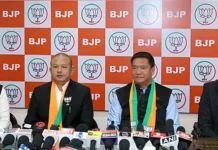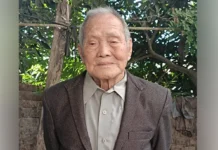Monday Musing
[ Amar Sangno ]
Truth be told, Lokayukta, the anti-corruption ombudsman organisation, is an unwelcome entity in every Indian state – at least in the states where corruption takes centrestage. Even though the Lokayukta has been established, the public servants and politicians who are at the helms of affairs would not hesitate to cause it to die an unnatural death, knowing well that the Lokayukta, if implemented in letter and spirit, would be a nightmare for them.
The Arunachal Pradesh assembly passed the Lokayukta bill on 4 March, 2014, when Nabam Tuki was the chief minister, aiming to establish the ombudsman organisation in the state to bring about transparency and accountability in governance, and to make the administrative machinery citizen-friendly.
After four years, current Chief Minister Pema Khandu’s government finally constituted the Lokayukta, with former Gauhati High Court judge, PK Saikia, as its chairperson and retired IAS officer Yeshi Tsering as member, on 27 June, 2019.
Apparently, the Lokayukta constituted six months ago is a toothless tiger, and has no power to pounce on corrupt officers and public servants. It contains far fewer clauses compared to the principal act (Lokayukta Act, 2014), which had conferred more powers on the Lokayukta to act.
The principal act had a prosecution wing and a wider scope for inquiry, investigation and trial, besides a special court to try offences and impose penalties. However, the current Lokayukta is without a prosecution wing and a special court. (A special court is supposed to be constituted by the government, as recommended by the original Lokayukta Act, to hear and decide cases under the Prevention of Corruption Act, 1998, and under Chapter 9 of the Indian Penal Code, 1860.)
In other words, the Lokayukta in its current form has squeezed out the scope of prosecution. It has been reduced to only inquire, and is not empowered to act.
Congress MLA and former union minister of state, Ninong Ering, speaking on the Arunachal Pradesh Lokayukta (Amendment) Bill, 2019, in the assembly on 9 July said, “If the Lokayukta is not empowered to investigate or prosecute, it would be akin to a toothless tiger.
“We should give all the powers to the Lokayukta,” Ering said, terming it a powerful weapon against corruption.
Ering also said there was no point having a Lokayukta that would simply inquire and put matters in cold storage.
However, a government officer defended the act, saying that it has the potential to reduce corruption.
“The institutionalization of the Lokayukta in Arunachal is one of the boldest decisions ever taken by Chief Minister Pema Khandu to weed out corruption from the state,” he said, and argued that the act would “scare the public servants from indulging in corruption.”
Another officer stated, on condition of anonymity, that the Lokayukta in Arunachal is in an infant stage and is yet to be properly structured and equipped. “It needs a separate establishment branch, a registrar, a deputy registrar, and so much human resource and fund allocation for it to function effectively,” he said.
The scale of corrupt practices in Arunachal is immeasurable. Although I do not have all the statistics to buttress my argument, endemic corruption has insidiously crept into the system of governance in many forms.
We are living in a system in which a person who gets incarcerated for corruption can pompously rub shoulders and hobnob with the high and the mighty in the government. In a way, it condones and abets corruption and emboldens the corrupt to indulge in more corruption, as the tribal society itself doesn’t have taboos when it comes to corruption – rather, we write encomiums on their skills to accumulate wealth.
Some influential officers and public servants must have giggled cynically at the appointment of retired judge Saikia and former IAS officer Tsering, knowing well that a toothless cub has been born amid ravenous hyenas.
Even before the anti-graft law has started learning to crawl, the prospect of it being efficient in Arunachal is the biggest question, as it is not as empowered as the principal act had been. It’s been six months now and the toothless anti-graft cub has been hibernating. It may perhaps never grow the claws to pounce upon the corrupt, as is the case in Maharashtra since 1971.
The chief minister is highly vocal and articulate about fighting corruption, and has openly stated that engineers should stop backdoor dealings and should be able to stand up to people in power. Therefore it is a surprise to see that the anti-graft ombudsman organisation in its current form – with the power to inquire but not act – has been constituted under Khandu’s administration.
To boot out the endemic corruption from Arunachal, a strong and resilient Lokayukta is the best possible remedy. Now all eyes are on the Lokayukta in the state to see whether it will ever roar at the corrupt people and claw away at the corrupt system, or remain weak and caged as in Maharashtra.




